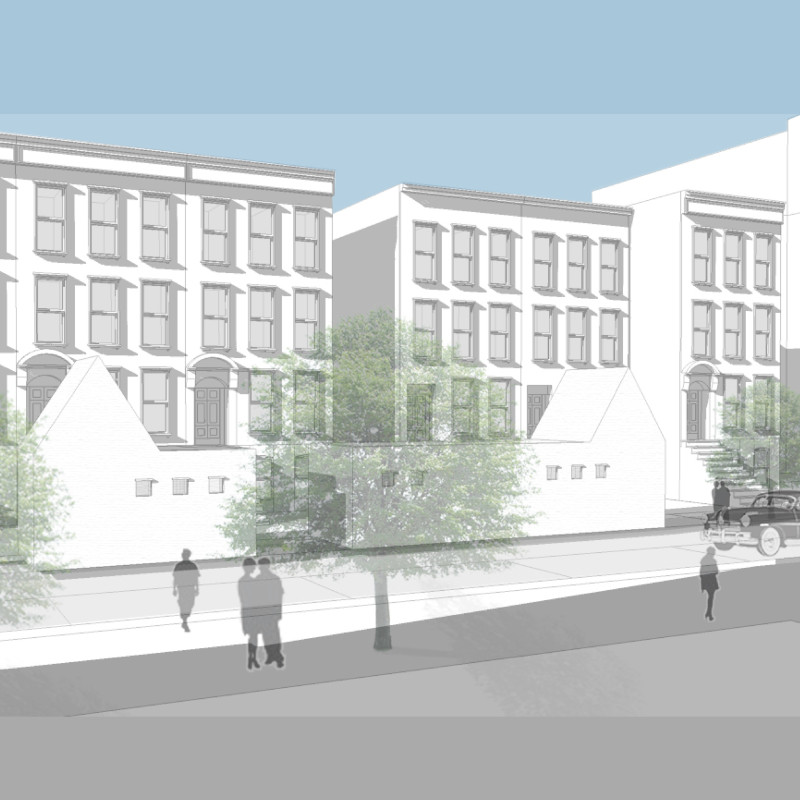5 key facts about this project
“A Street Reimagined” is an architectural design located in New York City, aiming to integrate residential spaces into the urban environment. The project addresses the need for affordable housing while enhancing connections within the community. By transforming underused areas, particularly parking lots, it seeks to create lively living spaces conducive to social interaction and a sense of community.
Community-Centric Approach
The design is guided by the idea that urban living should foster connection. By rethinking traditional residential layouts, the project encourages a co-housing model focused on community. The plan aims to convert around 100 on-street parking spaces around 59 West 128th St. into functional living areas. This change not only increases the availability of housing but also invigorates the street, changing the dynamics of urban life.
Shared Facilities
Central to the design are communal spaces, such as a kitchen and dining area for residents. These spaces serve as gathering points, encouraging interactions among community members. By focusing on shared facilities, the design promotes a sense of belonging while allowing residents to come together for meals and activities. This setup reflects a thoughtful integration of living and social functions.
Urban Farming Initiative
An intriguing aspect of the design is the urban farm, which includes outdoor gardens and indoor hydroponic systems. This endeavor aims to improve local access to food while promoting sustainable practices. The farm also creates work-trade opportunities for residents, supporting diverse groups within the community. By including individuals such as the homeless, recently incarcerated, and seniors, the project shows a commitment to inclusivity.
Sustainable Design Intent
While specific materials are not mentioned, the design indicates an intention to adopt environmentally friendly practices. It emphasizes the interplay between natural elements and constructed spaces, highlighting a broader approach to urban living. The urban farm serves not only as a resource but also as an educational platform, teaching residents about sustainable food practices.
The design brings together housing, community engagement, and sustainability in a way that reflects the needs and aspirations of residents, creating an inviting atmosphere for all involved.


























